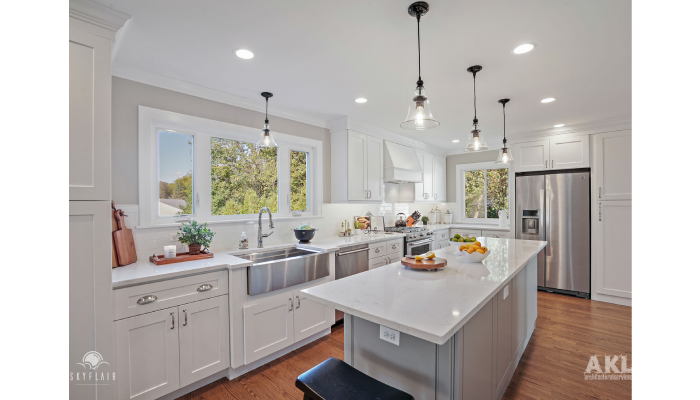When it comes to safe room doors, there are several important features that enhance security and functionality. First, vault doors serve as the primary access point and must meet strict security standards. They can have multiple locks and latches for added protection. Emergency doors are crucial if the main door fails, ensuring a quick escape route. Additionally, a security grill provides an extra layer of safety inside the vault. Reinforced panels create sturdy structures while ventilation grilles maintain airflow without compromising security. Reinforced compartments help secure valuables individually, and a safety corridor adds another protective wall, enhancing overall surveillance capabilities in high-risk environments.
1. Vault Doors: The Primary Entry Point
Vault doors are essential components of any effective safe room, serving as the primary entry point and often mandated by legislation. These doors must match the security levels of the surrounding walls, adhering to grades II to XIII as outlined in EN 1143-1 standards. They are designed for flexible access, allowing for features like remote opening and double-checking to enhance convenience without sacrificing security. Moreover, vault doors include multiple latches, ranging from seven to sixteen, with diameters between 30 mm and 60 mm, which provide an extra layer of protection. For those seeking additional safety, an optional emergency trap door can be integrated, ensuring that occupants have an escape route if needed.
These safe room doors come in various sizes to accommodate different vault specifications and can be customized with finishes that blend seamlessly into the existing architecture of a building. Some models even feature integrated alarm systems to further bolster security. Regular maintenance checks are recommended to ensure that all components are functioning properly, keeping the door in top condition and maintaining its protective capabilities.
2. Emergency Doors: Backup Security Measures
Emergency doors serve as a crucial backup in the event that the main vault door fails. These smaller vault doors must meet stringent standards, specifically having at least grade VII resistance to burglary as outlined by EN 1143-1. They can be seamlessly integrated into the main vault door or the surrounding armored panel, ensuring that they are readily accessible when needed. Designed for quick access, emergency doors often come equipped with tamper-proof locking mechanisms, enhancing safety during high-stress situations. High-quality materials are used in their construction, ensuring durability and reliability over time. In low-light environments, these doors are clearly marked for easy identification, which is vital during emergencies. Some models may include panic hardware, allowing for rapid opening when every second counts. Regular inspections are essential to maintain functionality, ensuring that the door will operate as intended in a crisis. Additionally, training users on emergency protocols is necessary to ensure that everyone knows how to respond effectively when the need arises.
3. Security Grill: Added Layer of Protection
A security grill is an essential feature that enhances the safety of a safe room. Typically installed on the inside of the vault, it acts as an additional layer of protection. You’ll often find it behind the vault door or at corridor entrances, where it can effectively deter unauthorized access. For those who have an integrated escape hatch in their vault door, the security grill should accommodate this feature seamlessly.
Made from high-strength materials, these grills are designed to withstand cutting and forced entry attempts. Their customization options allow them to fit specific vault needs, whether for size or design, making them versatile in various settings. Many security grills also come equipped with locking mechanisms, adding another level of security that can be crucial in emergencies.
Regular maintenance checks are vital to ensure the structural integrity of the grill, as wear and tear can compromise its effectiveness over time. Additionally, they can be painted or coated to blend in with the interior decor, preserving the aesthetic of the safe room without sacrificing security. For comprehensive protection, these grills can be compatible with various alarm systems, allowing for a coordinated response in case of an intrusion. Professional installation is recommended to ensure a proper fit, which is critical for maintaining the intended level of security.
4. Reinforced Panels: Strong Structural Design
Reinforced panels are a cornerstone of effective safe room doors, made from steel sheets fortified with high-strength composites. This unique composition allows them to be utilized in vault construction, especially where traditional reinforced concrete might not be feasible. The design incorporates a tongue and groove assembly combined with welding, creating a single, robust structure that enhances security. Available in various thicknesses, these panels can be tailored to meet specific security needs. They can also work alongside other security features for even greater protection. Beyond their strength, reinforced panels are resistant to environmental factors such as fire and water, ensuring longevity and durability. Installation is straightforward when conducted by trained personnel with the right tools. Some reinforced panels even offer insulation properties, helping to regulate temperature. Regular inspections are crucial to maintain their integrity and check for any signs of wear or damage.
5. Ventilation Grilles and Cable Grommets: Essential Connectivity
Ventilation grilles and cable grommets are crucial components in safe room doors, allowing air to flow and enabling connections while ensuring security is not compromised. These features are meticulously designed to maintain the resistance rating of the vault panels, ensuring that even with added functionality, the integrity of the safe room is upheld. They can be installed in concrete walls as well, enhancing their versatility.
Made from durable materials, these components can withstand pressure and wear, making them a reliable choice for long-term use. Custom sizes can be tailored to fit various systems, ensuring that your specific needs are met. Many grilles also incorporate filters, which help maintain high air quality within the safe room.
Accessibility for maintenance is another important factor; these grilles and grommets can be easily reached without compromising the vault’s security. They can also be integrated with existing ventilation systems, allowing for a seamless connection. Regular checks are necessary to keep them clear of obstructions, ensuring they function effectively. Some designs even include protective covers to further enhance security, making them an essential feature of effective safe room doors.
6. Reinforced Compartments: Secure Storage Options
Reinforced compartments within a safe room vault offer tailored storage solutions for various users. These secure spaces can be customized in size, accommodating everything from jewelry to important documents. Each compartment is certified against theft per the UNE 108115 standard, which means individual items receive an added layer of protection. For users with diverse needs, compartments often come with separate locking mechanisms, ensuring that only authorized individuals can access their valuables. Constructed from high-strength materials, these compartments are designed to resist tampering, providing peace of mind. Additionally, their design promotes easy organization, making it simple to keep track of stored items. For those who manage inventories, integrating these compartments with management systems can streamline tracking and auditing processes. Regular audits are recommended to ensure all items are accounted for, and some compartments may even include fireproof features for extra safety. To achieve optimal functionality, professional installation is crucial.
7. Safety Corridor: Enhanced Monitoring and Access
A safety corridor adds an extra layer of security to safe rooms by creating a double wall before the vault. This design not only enhances protection but also allows for effective monitoring and surveillance of the vault area. Access to the corridor is secured at both ends using a security grille, ensuring that only authorized personnel can enter.
The corridor is spacious enough for movement and equipment, making it practical for security personnel or maintenance workers. It may also include surveillance cameras for real-time monitoring, providing eyes on the vault area at all times. To further enhance security, motion sensors can be integrated into the corridor, alerting security teams to any unusual activity.
Regular maintenance and inspections are crucial to ensure the structural integrity of the corridor. Additionally, emergency exit features might be included for quick evacuation if needed. This setup is ideal for high-security areas that require constant monitoring and can be customized with lighting options to improve visibility, ensuring that the corridor remains a functional and secure aspect of the overall safe room design.

Mary Burns is a dedicated writer focusing on health and fitness topics. With a passion for promoting wellness and vitality, Mary shares her knowledge and expertise through engaging and informative blog posts.




